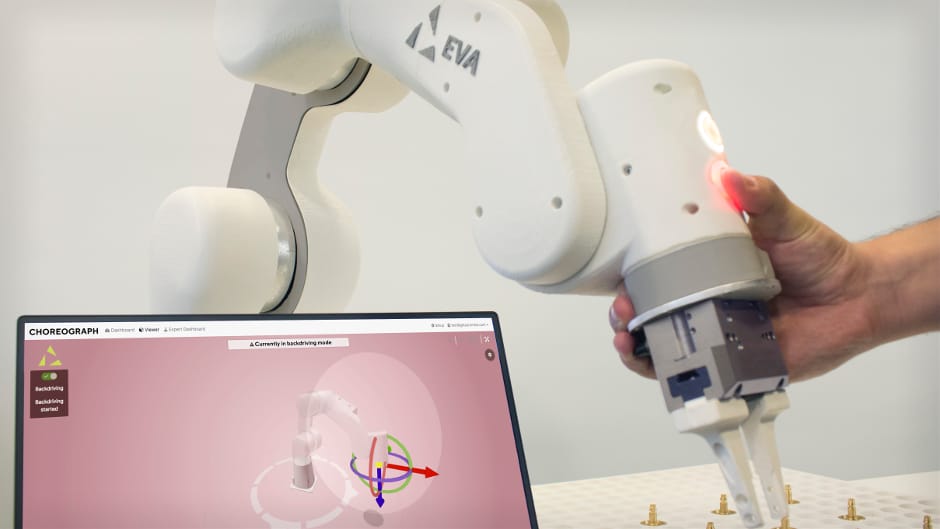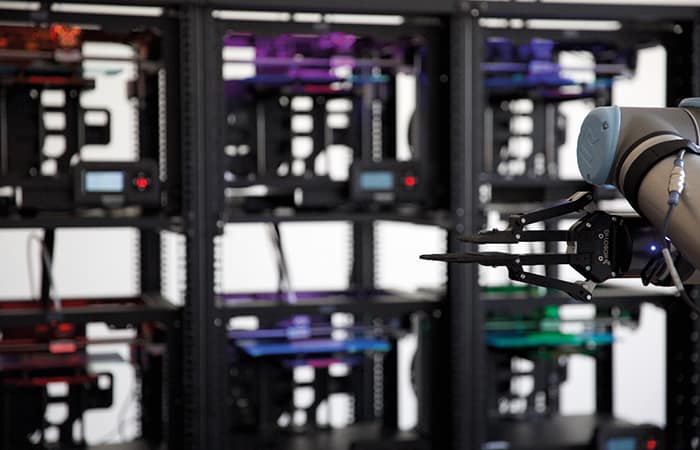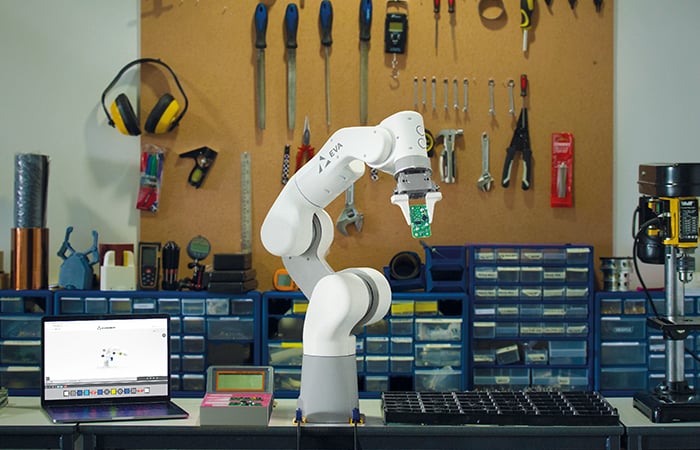
In the Brooklyn district of New York, Voodoo Manufacturing employs some 30 people in a business that operates around 200 desktop additive manufacturing machines (mainly Makerbot Replicator 2 devices) to produce thermoplastic parts for a variety of customers. Those customers range from marketing operations wanting promotional items to engineering companies wanting support in both prototyping and initial production runs without incurring ‘hard’ tooling costs.
But according to chief technology officer Jonathan Schwartz, in all cases, the company’s key value proposition is that its efficient use of low capital cost equipment enables it to compete with injection moulding on price for production runs between one to 10,000 parts.
Schwartz added that even though the company was only set up three years ago, it soon decided that the business model was too restricted and that its aim must be to become equally competitive in “high-volume” manufacturing, which in effect means for production volumes up to “100,000 parts”.
In turn, that meant reducing its own costs by “90 per cent” and, as it examined its own processes to identify target areas for appropriate measures, it zeroed-in first of all on “harvesting”: the removal of the plates carrying completed parts from machines and their replacement by a new one.
In the early days of the company, he explained, this was carried out purely manually by shopfloor technicians, so that “if there was no-one available it did not happen and the machine stood idle”.

It was a situation ripe for reaping the benefits of automation, and accordingly, just a year ago, Voodoo’s employees got a new colleague – a six-axis UR10 ‘collaborative robot’ with a maximum payload of 10kg from Danish company Universal Robots, representing an investment of roughly $45,000 (£32,000). Since then, the machine has been used in a mix of continuing development work and actual production operations intended to help the company advance towards that ambitious cost-reduction target.
As a production support tool, the robot is used in both a daytime mode alongside people and also in isolation at night. In the first of those roles it still operates autonomously tending a group of co-located additive machines within its 1.3m reach. In either case it can currently serve as many as 27 additive machines simultaneously.
Schwartz stressed that despite the “co-bot” tag, when operating alongside people the UR10 is not ‘collaborative’ in the strict sense that it is interacting with them, but it is exploiting the intrinsic capability that such machines possess to work in close proximity to them in complete safety without the need for any sort of protective enclosure. This, he said, is the result of the machine’s low mass as well as payload and speed of movement compared to a high-end industrial counterpart, together with its inbuilt force-sensing capability that would bring it to an immediate halt if it did make any sort of inadvertent physical contact with a person.
Further development work is already under way to enhance both modes of operation. In the first case the company is working to add a machine vision capability to the robot which will, among other benefits, further increase safety of operation by making contact-sensing a proactive rather than reactive capability. It’s also aiming to achieve what Schwartz admits is Voodoo’s “ultimate goal” in its use of the machine: providing it with an autonomous degree of mobility – perhaps by mounting it on an automatic guided vehicle (AGV) or using a rail system – so that instead of being positioned statically within an immediate group of additive machines, it could move among a more widely dispersed group.
He said that the company has calculated that when that goal has been achieved it should be feasible for the robot to serve “as many as a hundred” additive machines simultaneously.
Whichever way that goal is achieved, Schwartz said the fact that it is a realistic proposition underscores an essential characteristic of ‘collaborative’ robots – their “flexibility”. He observed that it would simply not make sense to attempt anything similar to the sort of robot that is designed to be “deeply integrated into the manufacturing process for a single product”. But, in contrast, “with our factory which is essentially digital and with a continually varying product line,” then for the moment at least that flexibility wins out over sheer “performance”.
That ‘digital’ element, by the way, is exemplified by the fact that despite the relatively low cost of all the hardware involved, Voodoo’s factory is still essentially an example of Industry 4.0-type working. Schwartz explained that the robot is connected via an Ethernet link to a central server and from there to the internet, while the additive machines find their way to the internet via USB links to various servers on the shopfloor. Hence the internet is the integration mechanism for the robot and additive machines.
Right now, said Schwartz, the company is probably achieving “a 50 per cent utilisation” of its additive machines on a “24/7 basis”. That should increase further with the projected addition of a second UR10 within the next six months. But that massive ultimate target may not be too far off either. Providing all goes to plan then he predicts it can be made a reality “within three to five years”.
Could the entry price even for collaborative robots be set for a dramatic reduction? A small start-up UK company based in London claims it is set to do that through the introduction of a lightweight, six-axis collaborative robot with both enhanced ease-of-use and affordability compared to rival devices. Automata was set up by two architects, Suryansh Chandra and Mostafa ElSayed, after they found their own initial experience of the technology unsatisfactory – particularly what they saw as the irksome programming procedures they encountered.

The result of their work is ‘Eva’, a machine that weighs just 8kg, including its integral controller, so that it can be carried around by just a single individual and simply clamped to almost any available commonplace surface. Other key performance parameters are a 600mm reach and a maximum 1.25kg payload. But perhaps the most astounding figure is its cost, at just under £5,000, which makes a foray into robotics feasible for even the smallest manufacturing operation.
According to Chandra, a key enabling factor to achieving that low weight is that all parts of the machine are specifically designed for that particular application with no use of off-the-shelf componentry. In turn, that allows the weight of the heaviest single element – the motor – to be reduced accordingly.
Programming can even be effected over the internet. Chandra said that a laptop computer set up within Wi-Fi range of the robot can display a graphical representation of the device with programming carried out by straightforward keyboarding routines.
He explained that the control software is divided between the robot itself and a remote server, so that, despite its low cost, the machine can exploit state-of-the-art Industry 4.0 techniques for its programming, though if preferred programming can also be carried out by conventional ‘move and memorise’ procedures.




Swiss geoengineering start-up targets methane removal
No mention whatsoever about the effect of increased methane levels/iron chloride in the ocean on the pH and chemical properties of the ocean - are we...